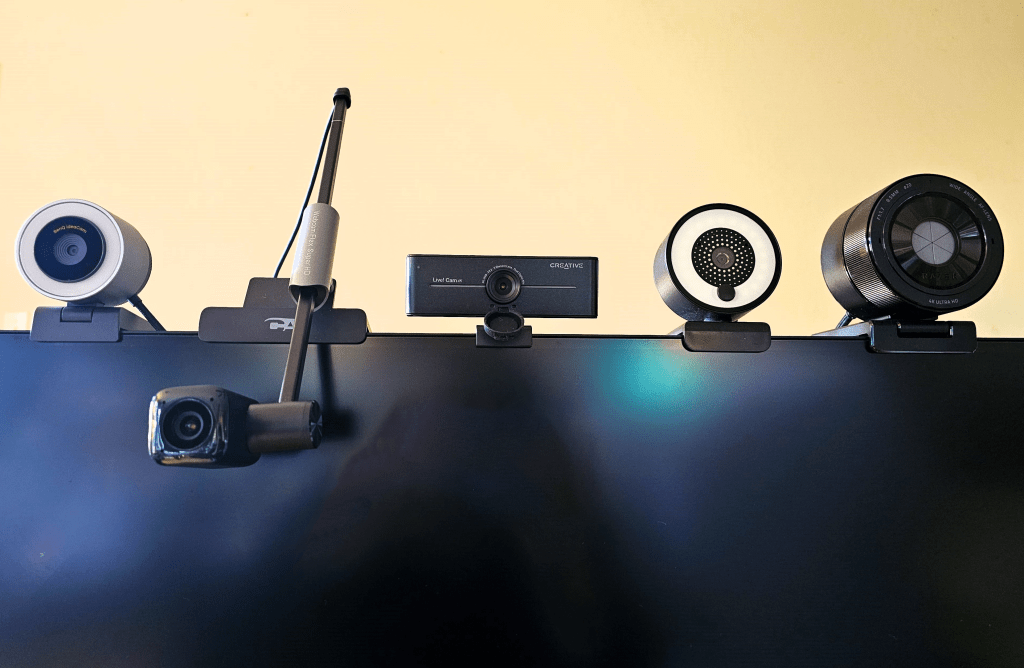PCWorld tests webcams with one goal in mind: value. I want you to buy a webcam with the best picture quality, the best noise cancellation, and the best overall feature set for the lowest price. Our picks for the best PC webcams reflect this.
Webcams exploded during the work-from-home movement in 2020, and we’ve covered them closely ever since. Below, you’ll find our pick for the best webcam overall, budget webcam offerings, and premium 4K webcams that offer the best of everything. We have a separate article covering the best Windows Hello webcams, which use biometrics to help eliminate passwords.
Our webcam testing methodology emphasizes showing you screenshots of how the webcam will take photos and video in multiple lighting conditions, audio tests, and more. Price matters, and we may adjust our recommendations on price fluctuations due to sales or tariffs.
Anker PowerConf C200 – Best overall webcam
Pros
- 2K (1440p) resolution with autofocus
- Adjustable field of view
- Solid low-light performance
- 18-month warranty
Cons
- Lacks 60fps support
- Anker software is necessary for full control
- Color balance is middling
Best Prices Today:
Who should buy the Anker PowerConf C200?
What sold me on this webcam are the basics: It’s just a good webcam for an affordable price. As such, it will appeal to a broad segment of buyers: work-from-home employees, small businesses, and general consumers. If you’re tired of your laptop’s webcam and want something better, start here with the Anker PowerConf C200.
It offers an affordable yet substantial upgrade from the 720p cameras found in most laptop webcams to a 1440p webcam. The webcam also works well in low light, a pitfall of many webcams.
Anker PowerConf C200: Further considerations
Anker and Amazon characterize this as a “Mac” camera. It’s plug-and-play within Windows, however.
Additional features include an adjustable field of zoom that crops down to 65 degrees, meaning you can orient the camera on your face alone. The camera autofocuses, too. Naturally, there are noise-canceling mics and a privacy shutter that actually turns off the entire device.
You will need Anker’s free Windows software, though, to enable some of these features. (That’s available on the Anker website.) We weren’t sold on the need for original software at first, but many other webcams now offer similar apps to enable full functionality.
eMeet Piko+ – Best overall webcam runner-up
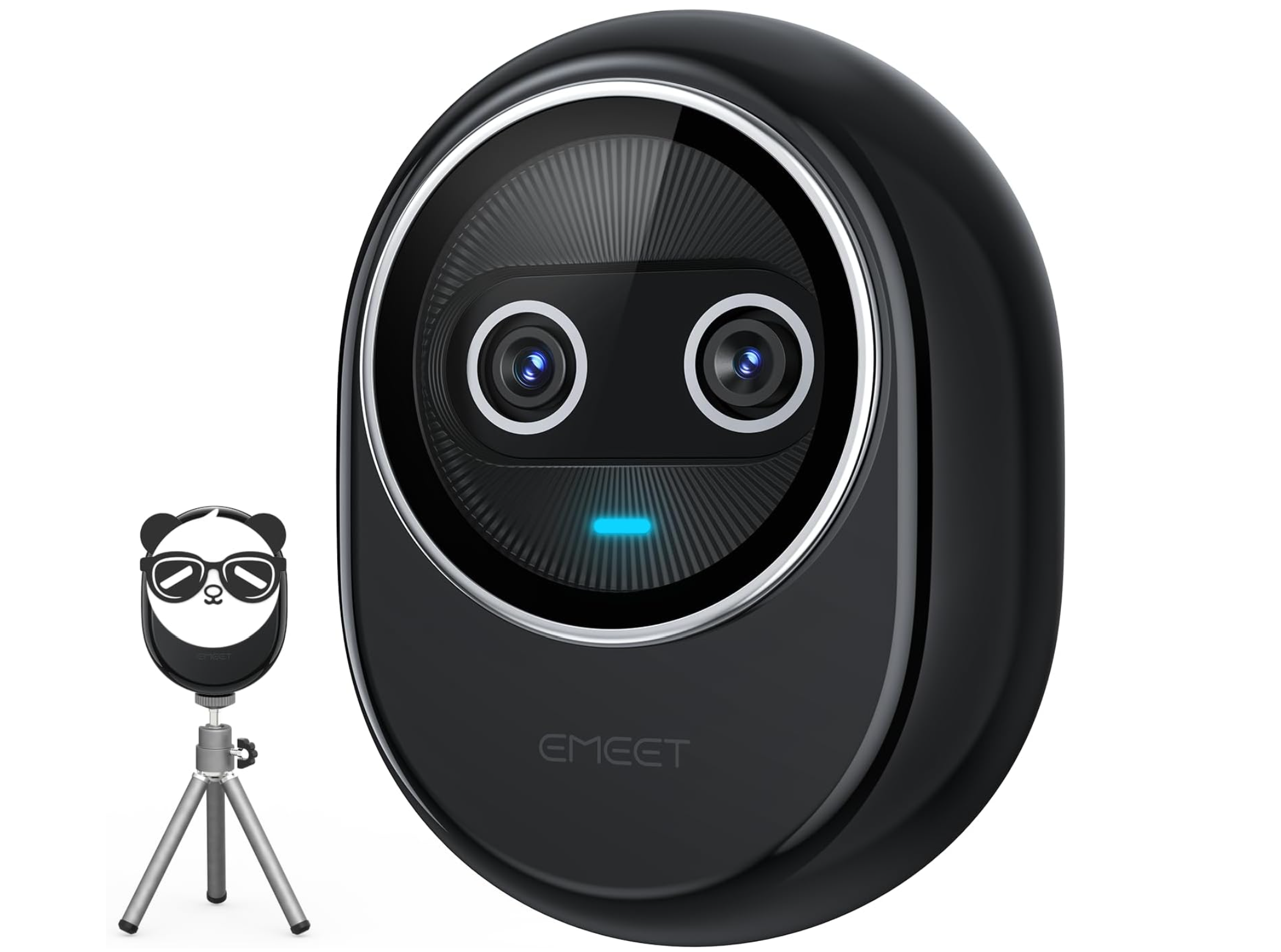
Pros
- Unique dual-lens design
- Stellar low-light capabilities
- Excellent 4K images
- Lengthy USB-C cable
- Great value for the money
Cons
- No laptop clip or mount
- Mics and audio filtering are okay
Best Prices Today:
Who should buy the eMeet Piko+?
Someone without an inquisitive cat. Seriously. The only knock on this camera is that (for now) it lacks a laptop mount, meaning that you’ll have to screw the camera to its tripod. That might be okay for those with a tidy desk, but bumping the camera means that you’ll have to readjust it. Otherwise, I think that most people will really like this cute little webcam.
I was amazed by its ability to capture crisp, 4K visuals in low light, and that was really what sold me.
eMeet Piko+: Further considerations
The eMeet Piko+ has a list price that’s hundreds of dollars less than some of the other 4K webcams we recommend. You’d have to put each webcam side by side to discern any differences.
I’m not a huge fan of the included utility software’s UI, but its ability to unlock some of the camera’s features, such as cropping and zooming, are easy enough to find and offer powerful configurability options — and hey, it’s software. It can be tweaked.
Read our full
EMeet Piko+ review
Creative Live! Cam Sync 4K – Best budget webcam
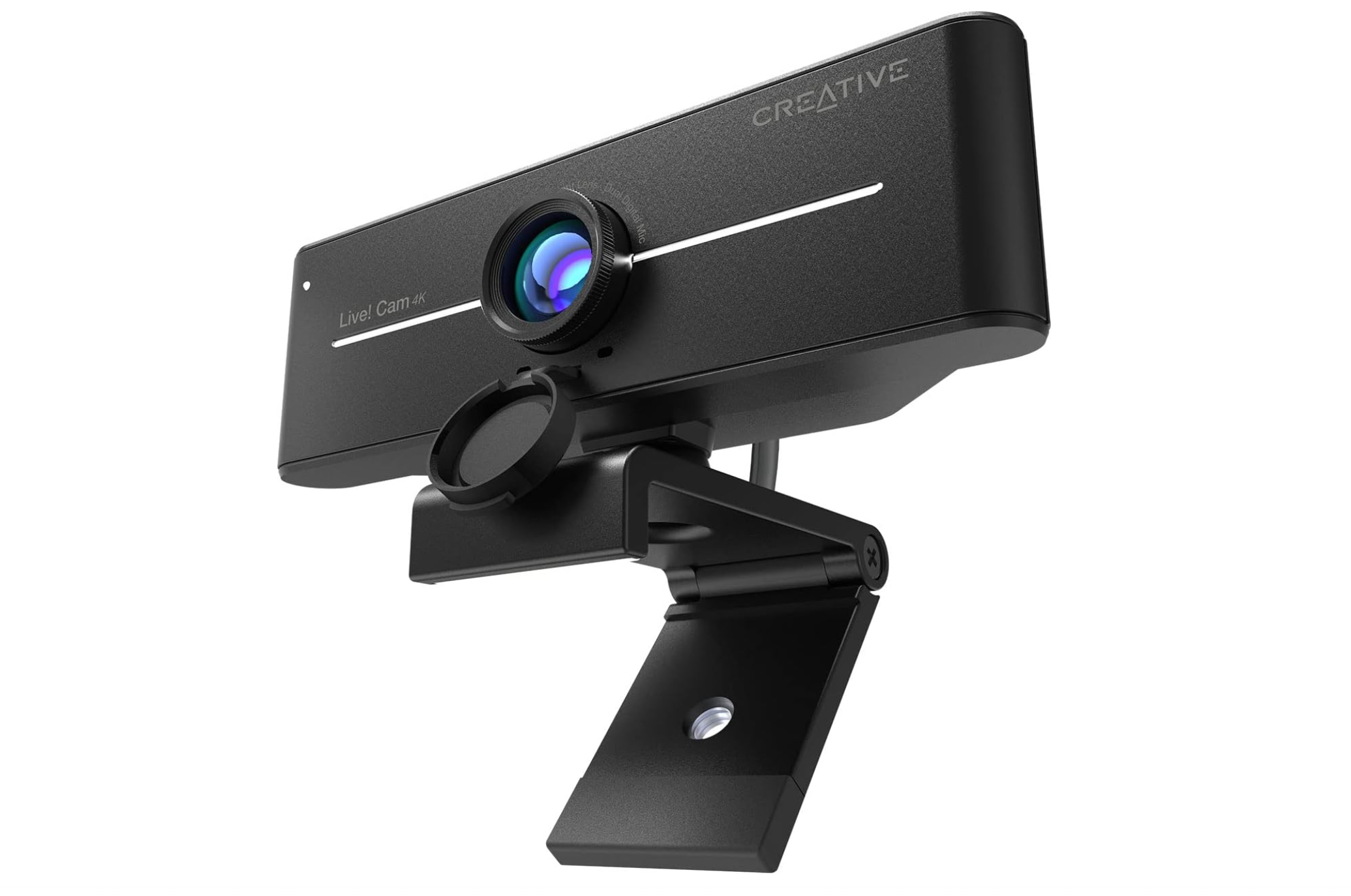
Pros
- 4K resolution for cheap!
- Backlight adjustment isn’t bad
Cons
- Poor color balance
- Adjustable focus is of iffy value
- Cheats a bit in frame rate
Best Prices Today:
Who should buy the Creative Live! Cam Sync 4K?
If 4K matters, and you don’t feel like spending a lot, this is the camera for you. To me, this feels like a good choice for a student, or someone who wants to look good in front of their friends and maybe while taking remote classes, but just doesn’t want to spend a ton of money.
It’s also best for someone who will be streaming from an environment without a lot of (changing) natural light, but is still well-lit by a lamp or screen.
The question you should always ask of budget hardware is, what corners did they cut? Here, the answer is: not many.
Creative Live! Cam Sync 4K: Further considerations
Okay, it has manually adjustable focus, but that’s not a problem if you don’t move around a lot. Similarly, backlight adjustment is typically handled automatically, but this webcam’s manual adjustment is not a problem if you work in a single location — you can dial it in and forget it. There’s a flip-over privacy shutter, and a button to mute the mic.
You’re going to find that it cheats in the frame rate a bit, and I wasn’t wild about the color balance. But for about $50, for a 4K camera? It’s worth investigating.
Read our full
Creative Live! Cam Sync 4k review
eMeet SmartCam C960 2K – Best budget webcam runner-up

Pros
- Very good value
- 1440p, 30Hz, autofocus
- Good noise-cancelling mics
Cons
- Autofocus doesn’t work as well in dim lighting
- Somewhat precarious connection to a laptop
- Unnecessary utility software
- DIY privacy shutter
Best Prices Today:
Who should buy the eMeet SmartCam C960 2K?
This is for the person who says, “I want to upgrade my webcam, but I want to spend the least amount of money possible.” You’ll still get a decent upgrade; more than you would expect, actually. If a $10 discount matters, buy the cheaper 1080p version.
This webcam is also going to work better on a desktop monitor, by lieu of its rather simple mount. It feels flimsier when attached to a laptop.
eMeet SmartCam C960 2K: Further considerations
eMeet’s camera feels like a step up from other budget offerings. It’s not perfect. However, the 1440p resolution is a better both on paper and in the real world. The other part of the equation that often gets passed over are how well the noise-cancelling mics work, and in this case I was pretty impressed.
This camera is also available from multiple retailers, which helps keep the price down — a must for a budget webcam. To be fair, you’ll notice the review compares the C960 2K to its predecessor, the more vanilla (1080p) C960. It’s about $10 cheaper. The C960 2K’s picture is marginally better, with improved autofocusing, but I think that the C960 2K’s mics are genuinely superior.
I don’t love some of this webcam’s features, including the stick-on privacy shutter…but it is a budget webcam, after all.
Read our full
eMeet SmartCam C960 2K review
BenQ IdeaCam S1 Pro – Best premium webcam for streaming
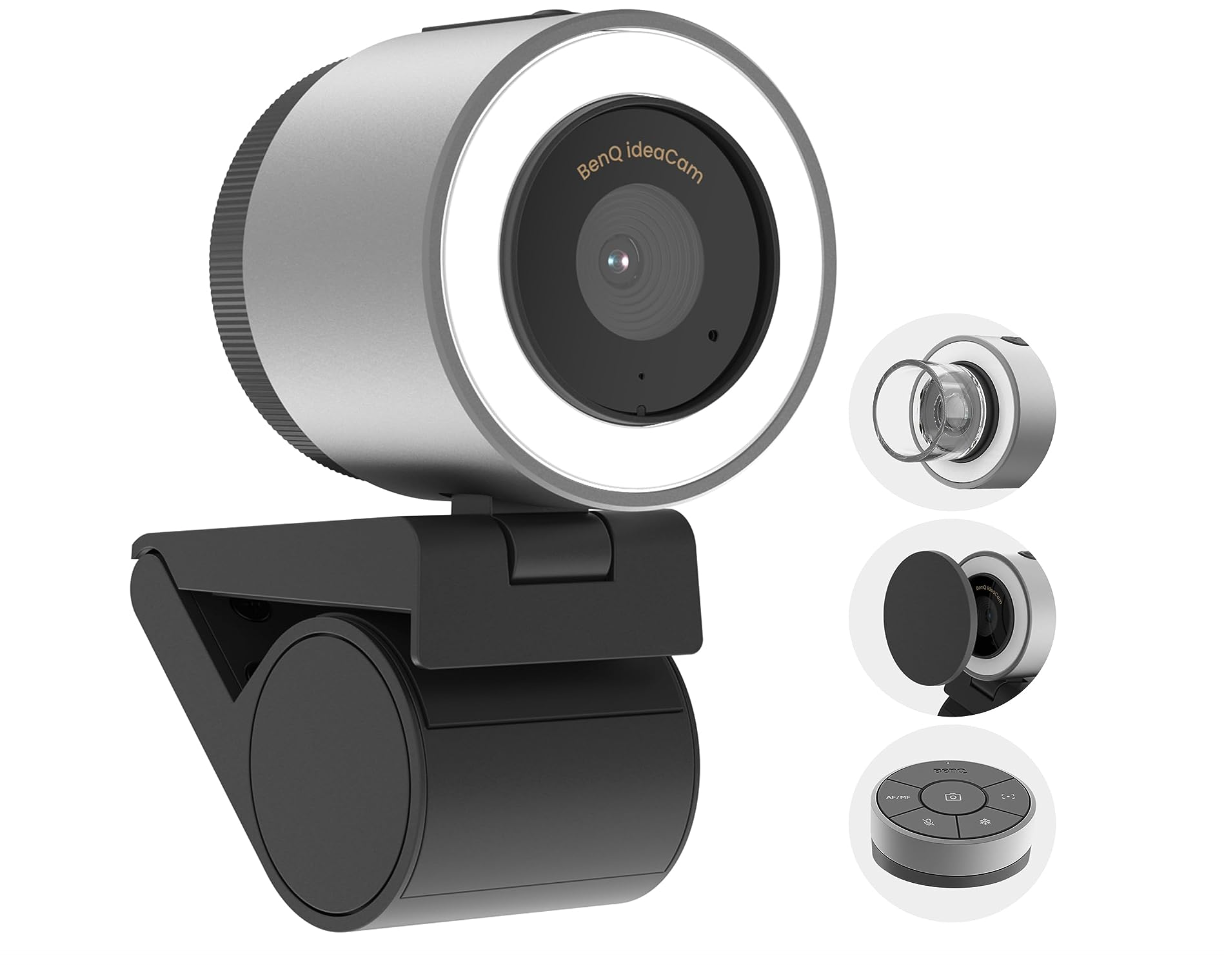
Pros
- Great value
- Robust physical design
- Integrated ring light
- Macro lens genuinely seems useful
- Slick remote control included
Cons
- Not quite 4K (but close enough)
- No 60fps option
- No AI pan or zoom, though manual zooming is allowed
- Legacy USB-A connector
- Separate privacy shutter
Best Prices Today:
Who should buy the BenQ IdeaCam S1 Pro?
The IdeaCam S1 Pro looks particularly nice under good lighting, so it’s better for a user who isn’t expecting the camera to do a lot of heavy lifting in that regard. And while it might not offer the absolute top-of-the-line options, it never really fails at anything, either. It’s just a good, solid value. Period.
What I think I like most about this webcam, though, is that it excels as a webcam, then adds additional value through its peripherals, including both a macro (closeup) lens as well as a free remote control. This almost-but-not-quite 4K webcam even flips over for a top-down view.
If you’re a streamer (a woodworker or baker, say) then the ability to flip the webcam into a top-down mode, then undock the IdeaCam S1 Pro and bring it in close with the macro lens, feels like a tool hardly any other webcam offers.
BenQ IdeaCam S1 Pro: Further considerations
The IdeaCam S1 Pro would probably be our favorite webcam if it wasn’t for the $100 or so price premium it commands, which isn’t for everyone. It’s robustly built, and ships with a free software utility that adds to its capabilities. (Zooming in and out is most easily accomplished via the remote control, which does take up more room on your desk.)
The webcam slides in and out of a robust mount quite easily. Pair that with the macro lens, and you can zoom in on detail work for presentations or hobbyists. The webcam has autofocus, though you’ll probably want to lock down the focus for the macro lens. It all works surprisingly well together, though.
Read our full
BenQ IdeaCam S1 Pro review
OBSBOT Tiny 2 PTZ 4K – Best premium 4K webcam
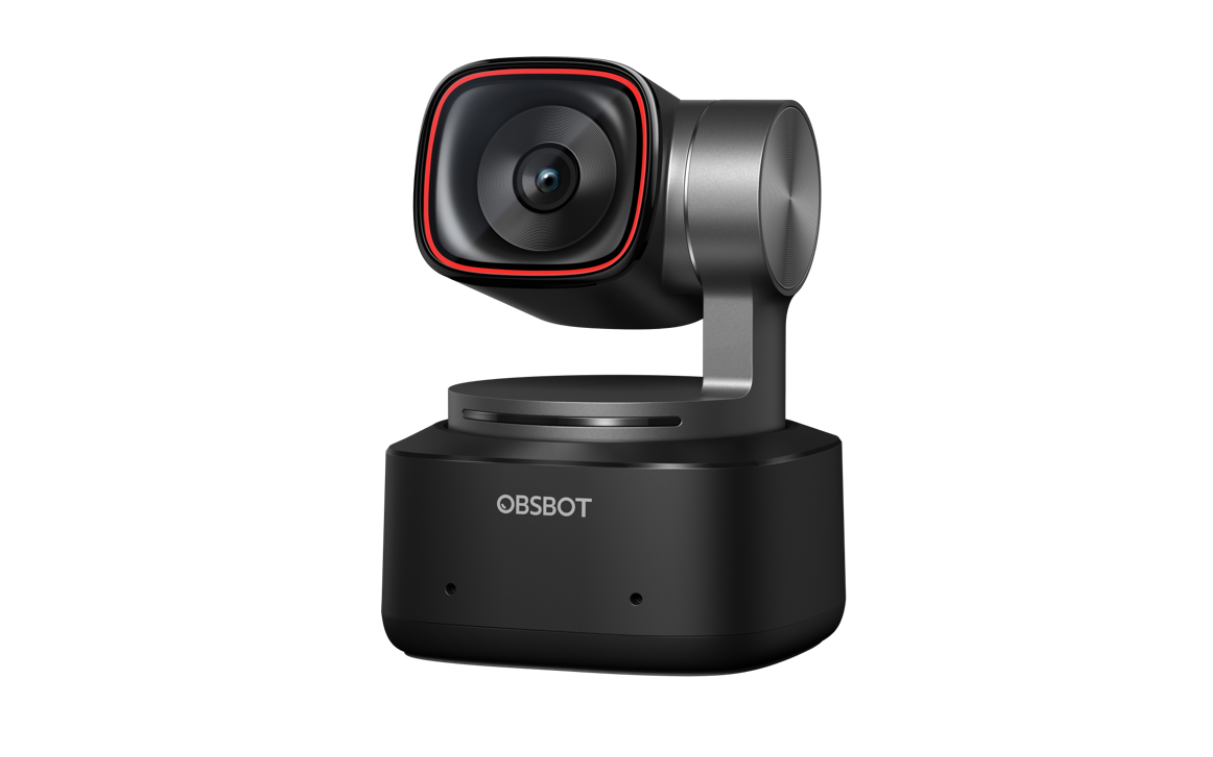
Pros
- Superb 4K video in multiple lighting conditions
- 60Hz option
- Excellent utility software and configurability
- Solid mic
- Voice commands are a nice touch
Cons
- Doesn’t sit as securely as Tiny 1
- “Beauty” options aren’t worth it
Best Prices Today:
Who should buy the OBSBOT Tiny 2 PTZ 4K?
If the budget webcams we selected above were ideal for students, this is the lecturer’s webcam. Share your slides with your student (or your clients, in a business setting) and let your video app project a snapshot of your face over them as you illustrate your point. If you walk and talk, this is the webcam for you.
Floating on a gimbal, this tiny(!) 4K webcam can literally pan, zoom, and rotate essentially 360 degrees, using AI to lock on your face and follow it as you walk around a room.
OBSBOT Tiny 2 PTZ 4K: Further considerations
While the Tiny 2 webcam boasts the same gimbal and tracking features as the first Tiny PTZ webcam, OBSBOT used a bigger 1/1.5-inch 50Mpixel sensor in the new model that lets in more light and provides a slightly clearer picture. So it accomplishes what you’d expect in a webcam: It wildly succeeds as just a webcam, with gorgeous 4K HDR images — but provides the increased tracking capabilities to add value. It almost tracks a little too well; avoid zooming in too close if you walk around so as not to give your viewers vertigo!
I also love the fantastic software package that accompanies the webcam, which on the Tiny 1 was the best I’d ever seen. I’m less impressed by two new features: voice commands, which are useful but not necessary, and new “beauty” features that use AI to adjust your face. While the latter features work, I prefer a more natural appearance, flaws and all.
Read our full OBSBOT Tiny 2 4K PTZ webcam review
Razer Kiyo Pro Ultra – Best premium 4K webcam runner-up
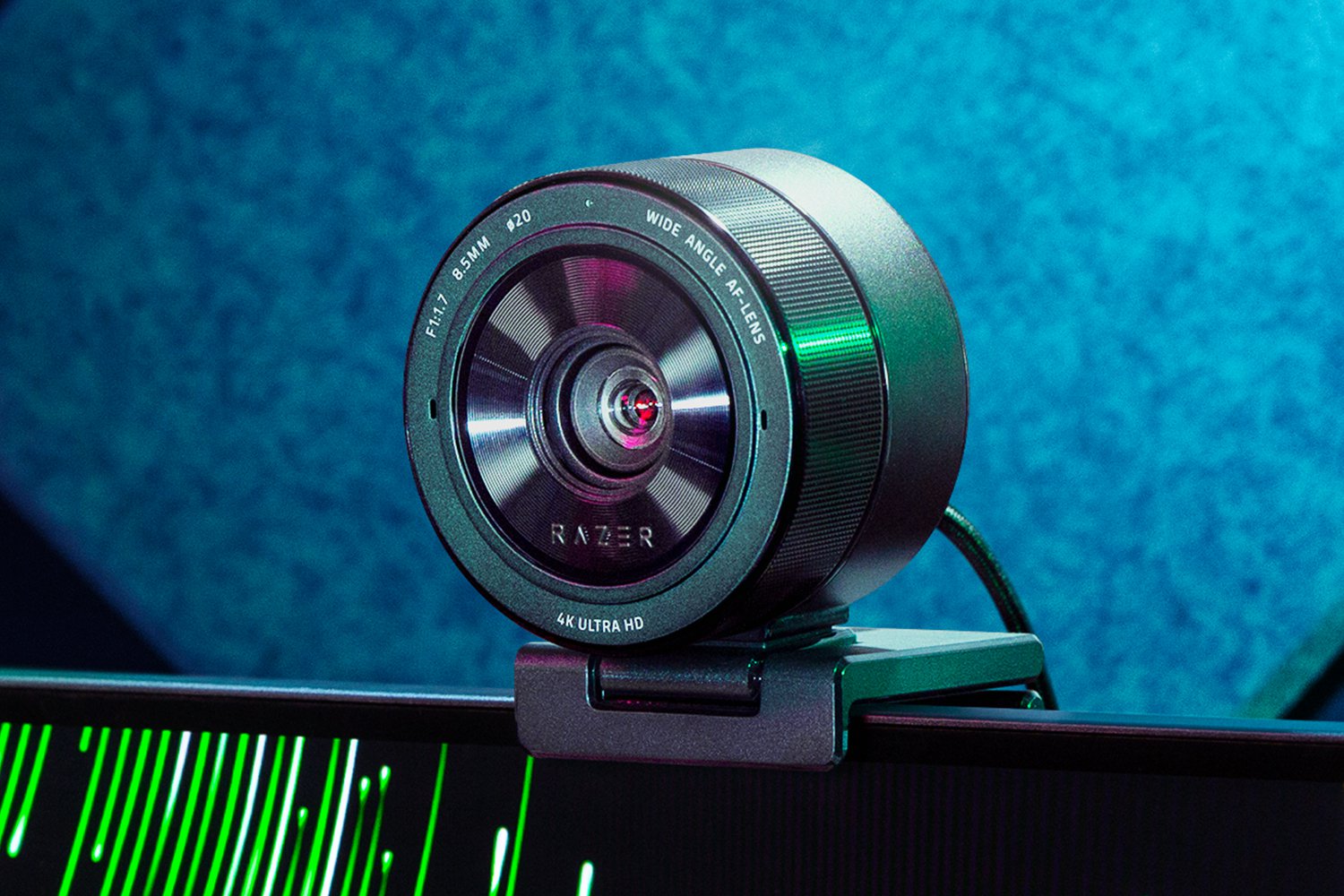
Pros
- ‘DSLR-quality’ imaging
- 4K options, HDR too
- Terrific configurability
- Lens cap as well as a privacy shield
Cons
- Whew, that price!
- Average mic quality
- No Windows Hello
- Limited purchase options; just Razer.com for now
Best Prices Today:
Who should buy the Razer Kiyo Pro Ultra?
If you want to look your very best on cam, buy this webcam. The lack of 4K60 captures may rule out high-end game streaming, but the camera’s ability to capture your face under most lighting conditions means a lot of other people will love it. Whether you’re pitching products on a Zoom or Teams call or you want to stand out among style-conscious peers, the Razer Kiyo Pro Ultra is the webcam for making a strong impression.
The Razer Kiyo Pro Ultra claims to offer DSLR-quality images, and boy, it comes pretty close! This webcam captures video with a massive 2-inch lens at 4K at 30Hz or 1080p at 60Hz, using autofocusing technology that does a great job. The camera also can zoom in to offer a field of view between 72 degrees and 82 degrees, making sure that you, and you alone, are on cam.
Razer Kiyo Pro Ultra: Further considerations
All of this combines to produce an image that looks simply outstanding. It would be nice to see this camera produce 60Hz at 4K; instead, you have to choose one option or the other. But check out the sample screens in our review, and you’ll agree that it all looks as though a professional captured it. It even handles odd lighting situations very well. Colors just pop! We’ve highlighted some of the shortcomings above, but they’re overshadowed by everything else this webcam does.
Read our full
Razer Kiyo Pro Ultra review
NexiGo N980P – Best webcam for wide-angle
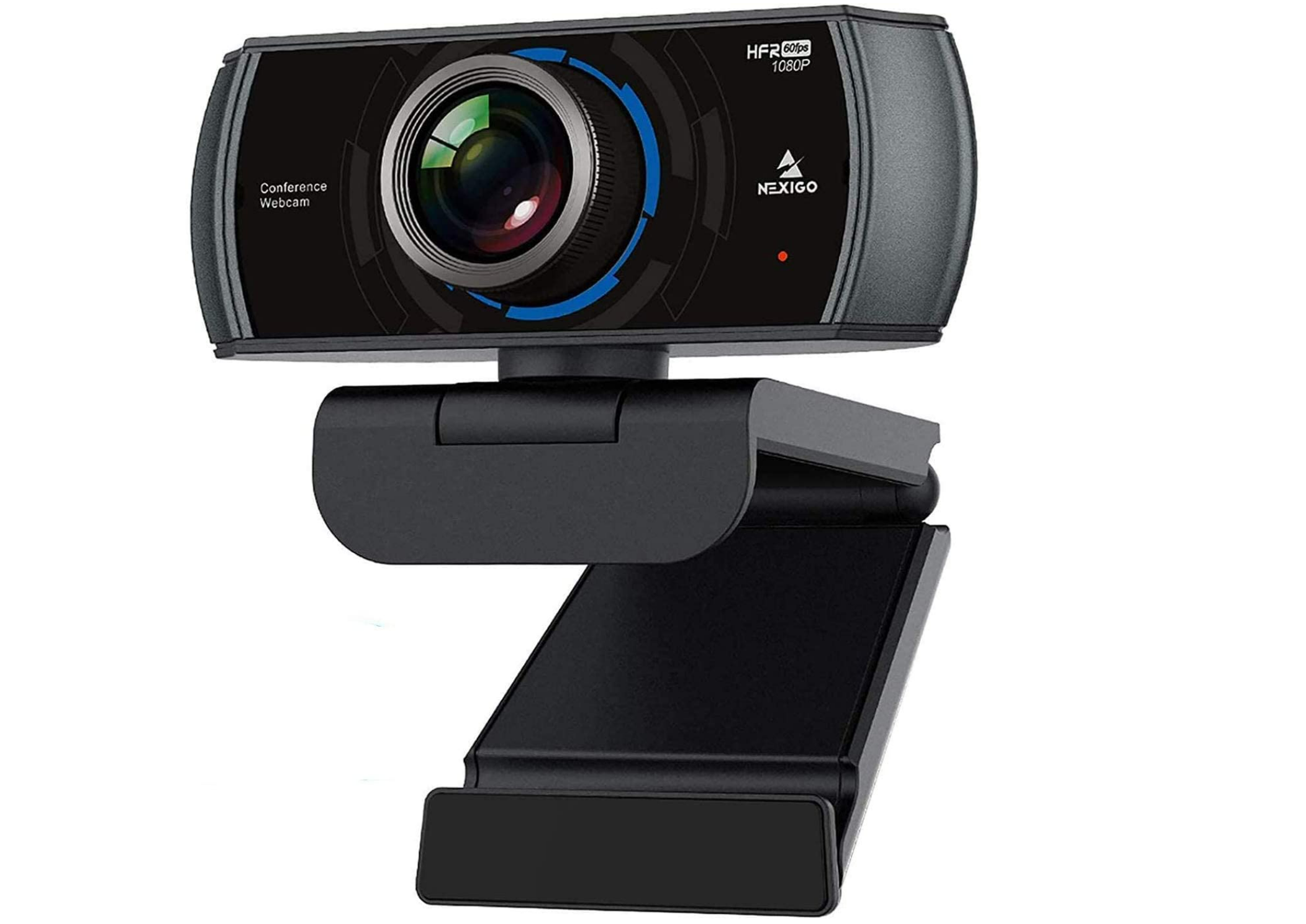
Pros
- 60fps
- 120-degree viewing angle
- Privacy shutter
Best Prices Today:
Who should buy the NexiGo N980P?
If you have more than one person on camera at any one time, consider something like the NexiGo N980P. During the pandemic, the local middle school’s drama department broadcast monologues and scenes via Zoom, which allowed students the opportunity to perform. But a narrow webcam wouldn’t have allowed these scenes to be broadcast as effectively.
This camera would work equally well with a small conference room or even a family gathering, such as a living room where one family talks to grandparents overseas. It’s still a fixed-focus camera though — if you want an autofocusing model I recommend you pay about $100 for the upgraded NexiGo N680p instead.
NexiGo N980P: Further considerations
Not everyone needs a wide-angle webcam. But this does allow you to show off more of a scene than an ordinary webcam does, which makes it a valuable tool for specialized applications.
This fixed-focus 1080p webcam captures frames at a smooth 60 frames per second, as opposed to the more standard 30fps. You’ll look smoother and more lifelike as a result. The wide angle means that it will work well in a conference room. A privacy shutter is included.
Logitech Performance FHD Webcam – Best overall webcam for Windows Hello
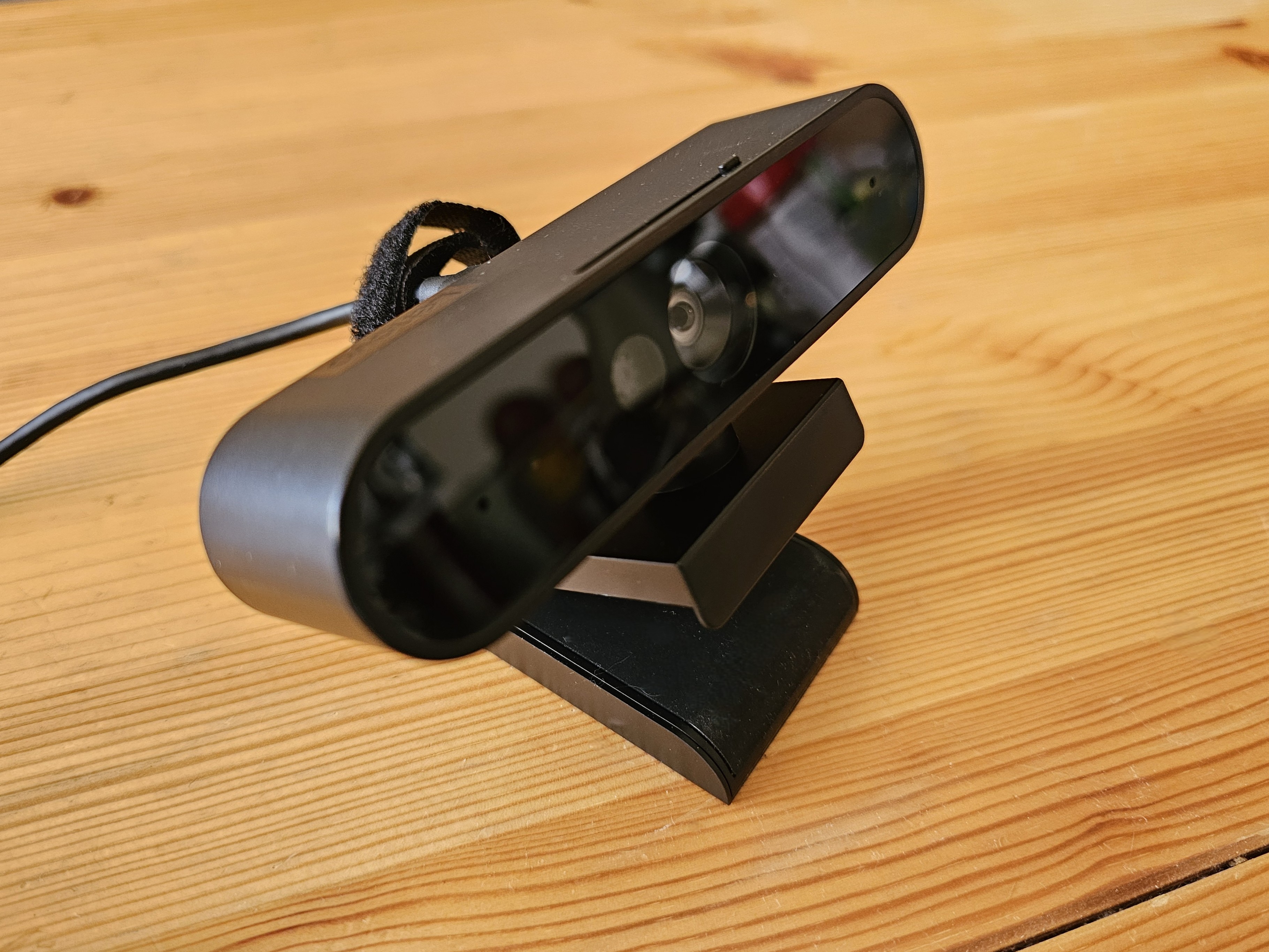
Pros
- Reliable
- Basic 1080p, 30Hz functionality
- No issues with Windows Hello
- Attractive price
- Privacy shutter
Cons
- Just the basics — no added features
- Average noise cancellation
Best Prices Today:
Who should buy the Lenovo Performance Windows Hello Webcam?
If I hadn’t tested this webcam myself, I might not have recommended it. But I was really impressed by the quality of the video this camera captured. (See our review, below, for more.) Our existing picks for the best budget webcams have a higher resolution, which I think elevates them above the Lenovo.
With a solid webcam performance and Windows Hello capability, I think you’ll really like this webcam, even as basic as it is. And you’ll save a ton, too.
Lenovo Performance Windows Hello Webcam: Further considerations
It is basic, down to the packaging. Windows handles all of the necessary adjustments: contrast, white balance, et cetera. There are no utilities to facilitate any settings you might make. The noise cancellation is adequate, but not much more than that.
Read our full
Lenovo Performance FHD Webcam review
CA Essential Webcam Flex (WC-Flex) – Best line-of-sight webcam
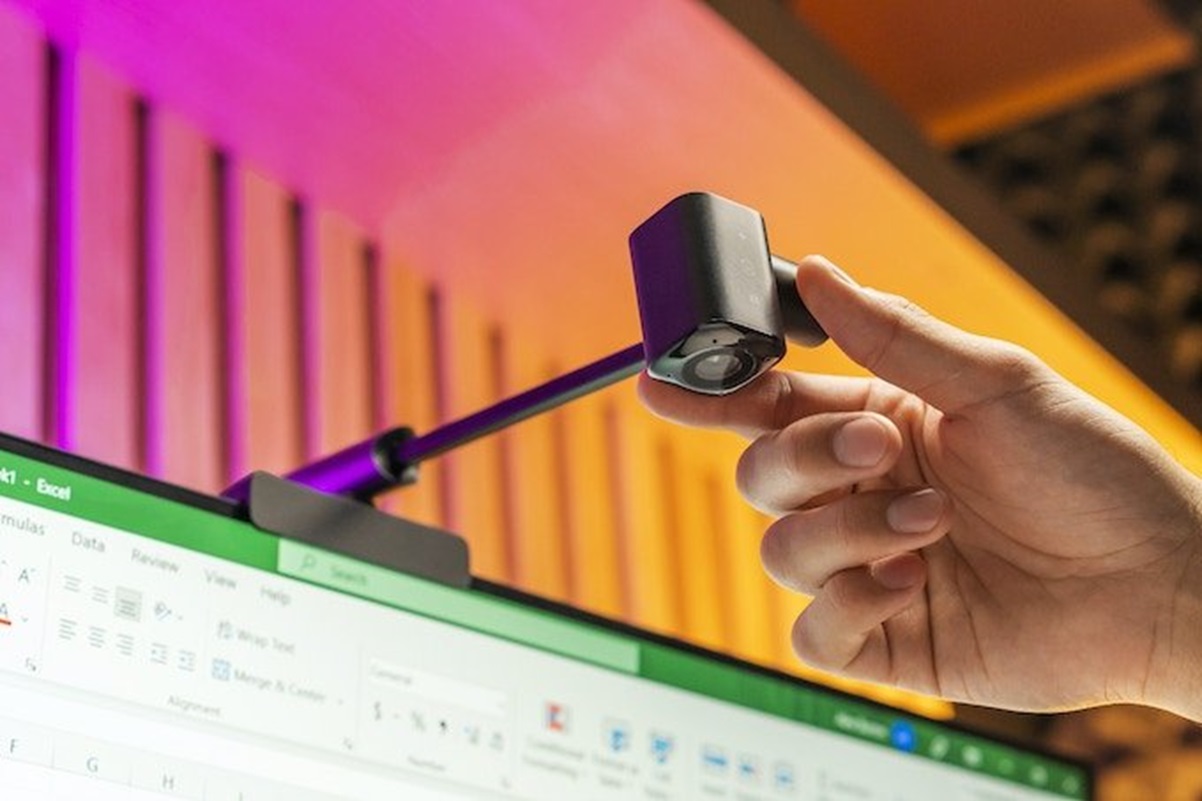
Pros
- Overhead configuration can be good for streaming
- Image quality is decent
Cons
- Muted colors
- Finicky zoom/crop controls
- Ungainly; primarily for monitors
Best Prices Today:
Who should buy the CA Essential Webcam Flex?
Some will dismiss the Webcam FLex as a gimmick. It kind of is. But this is also a good camera for people who want to feel more connection with the person on the other end of a video call.
With a webcam mounted on top of your monitor, you can’t look at the eyes of the person you’re talking to while maintaining eye contact with the physical webcam. CA’s webcam solves that problem, giving conversations a much more natural feel.
CA Essential Webcam Flex: Further considerations
You’ll be able to look directly into the “face” of the person you’re talking to, even if you may need to move the webcam slightly to the left or right to not block their image. Still, the person you’re talking to will see your face directly in their screen, rather than offset.
I can see this being a good camera for professionals who require fostering a sense of connection to be effective at their jobs — such as a therapist or a salesperson, for example.
Read our full
CA Essential Webcam Flex (WC-Flex) review
Other products recently tested:
- Elgato Facecam Mk. 2: Elgato’s upgraded 1080p webcam offers very good image quality and top-notch image software that allows you to preview changes to the image, even if the webcam is being used. But it lacks a microphone, which is a key omission even if Elgato (a mic maker) believes you’ll already buy one of its own.
- iContact Camera Pro: One of the few line-of-sight webcams, the iContact dangles the webcam down in the middle of your screen, which allows you to “look” directly at the person you’re speaking to. It’s a great idea, executed a bit poorly.
- Coolpo AI Huddle Mini Lite: Though this laptop id designed to be mounted on a laptop, Coolpo designed it for both individual and group use. It features excellent image quality and noise cancellation, though the utility app is buggy.
How PCWorld tests webcams
Our recommendations for webcams are weighted pretty heavily toward the image each webcam produces, as you might expect. But there are a number of additional criteria we look at when making a webcam recommendation. A separate article provides a detailed explanation of how we test webcams at PCWorld.
Simply put, I weight price heavily, trying to ensure that you’re getting the most for your money. I then look at the images those cameras produce, in multiple lighting scenarios, and take screenshots for you to examine in our individual reviews. I test how well it mounts to a laptop or monitor. Finally, I test the noise cancellation and other features.
Why you should trust PCWorld for webcam reviews and buying advice
PCWorld has covered technology since the 1980s, including PC peripherals like webcams. But ever since the work-from-home movement kicked off in 2020, webcams have become a critical aspect of business and social activity alike — and we were on top of it from the beginning. Since then, we’ve written numerous webcam reviews, sharing testing responsibilities among our colleagues in Germany, Sweden, and elsewhere.
Who curated this article?
My name is Mark Hachman, and I’ve been writing for PCWorld for over a decade. All told, I have over 30 years of experience in technology journalism, with about half of that specifically covering consumer products.
How to choose the best webcam
Laptop webcams generally offer basic 1080p functionality, so I look for a webcam that offers something better. Desktops, which don’t offer any webcam at all, lower the bar.
Take note of whether you want to use your webcam for personal use, such as recording a video for a friend; streaming; or for applications like Google Meet, Zoom, or Microsoft Teams. With the first two categories, you can record at the higher resolutions that a premium webcam provides, just like a high-end smartphone camera.
Neither Teams, Meet, or Zoom will stream the output of a 4K camera. On the other hand, they will accept the input of a 4K camera and simply downscale it to 1080p resolution. That’s not too shabby: 4K webcams tend to use larger sensors, letting in more light. You’ll tend to look better, even if your video call doesn’t take full advantage of the higher resolution. For that reason, I still think a 4K (or 2K) webcam is a good choice.
A higher resolution also allows you to digitally “zoom in” on your face, making you the focus of the call or stream. Some cameras already do this using a tight field-of-view; others can “crop in” using zoom functionality.
The other factor to consider is the refresh rate: you’ll seem more natural with a 60Hz webcam, which is the refresh rate most televisions use.
Looking like you’re on television will subtly lend you authority. People gravitate toward celebrities, and a 4K, 60Hz webcam is basically what your TV offers. If you’re an executive or making sales calls over Zoom or Teams, a premium webcam may give you an edge. That’s why professional streamers use them, after all.
All of my testing assumes that you’ll be using the available lighting. But you can certainly project an aura of confidence or authority with an accessory like a ring light. I haven’t found any webcams with an integrated ring light that I like, however — they just don’t offer enough light for me to recommend them. A well-lit room with natural light is my preferred setup for most scenarios.
Webcams: Glossary of words to know
Adjustable or fixed focus
Don’t worry about fixed-focus, as virtually all webcams have been pre-configured at a focal length that’s about the distance between your face and your laptop or monitor. You’ll need to account for this with tripods, however, or pay a little more for an autofocusing webcam. Autofocus webcams are handy for situations where you may be moving about the room, but beware distracting webcams that frequently refocus.
Higher frame rates
A standard webcam captures video at 30 frames per second, and will look “normal.” You’ll notice the smoothness of a 60fps camera though, and so will people you’re on a video call with.
Field of view (FOV)
The camera’s field of view can vary. A 90-degree FOV helps people focus on you (and perhaps not the mess you’ve hidden off to the side). A 110-degree or higher FOV works better for group shots, although distortion can become a problem the wider your FOV gets. A 65-degree FOV may be perfect if it’s just you.
Think of a 90-degree FOV as one that would show two people seated side-by-side at what you would consider a “standard” distance from a webcam, or a foot or two. A 110-degree FOV can show three people, squeezed a bit close together. Keep in mind that many videoconferencing applications offer the option of virtual backgrounds, which eliminate visual clutter.
Privacy shutter
These devices are not a privacy threat, for the simple reason that they can be unplugged easily. Most have a flip-down privacy shutter, but you could always put tape over the camera or drape it with a dark cloth.
Ring lights
Yes, integrated ring lights are now a thing on premium webcams, and worth the money if lighting is a challenge for you. While the integrated light will certainly help with lighting, a big bright monitor display (use a full-screen version of Notepad for a white screen) in front of you can serve a similar function. You can also purchase a ring light separately.
Windows Hello
You may have used Windows Hello with a fingerprint reader or another laptop. The camera simply “recognizes” you, logging you in. It’s exceptionally convenient. We have a separate article on the best Windows Hello webcams.
Tripod bundle
With so many webcams on the market, manufacturers are trying hard to differentiate their products. The new trend is a small tripod, which gives you more options for mounting the camera. Not all webcams include this. Normally, however, you can simply clip the webcam to the top of a display or a laptop with its “jaws” clamp, so a tripod isn’t really necessary unless you move around a lot or want a different angle.
AI
There’s a potential wild card that may be attached to webcams in the future: artificial intelligence, specifically Windows Studio Effects.
Windows Studio Effects uses the AI capabilities within a Copilot+ PC to blur your background, provide audio filtering, and provide a facsimile of eye contact, even if you aren’t looking directly at the camera. They also “crop in” to your face, offering something like automatic panning and zooming. (The OBSBOT webcams don’t need any of this, using an independent gimbal and tracking software to keep you in the frame.) Most videoconferencing applications perform these tasks already.
Honestly, the most impactful use of AI I’ve seen is AI-based noise cancellation, which works like magic, filtering out background music and white noise. (The one test that I haven’t tried is to check if it filters out the sound of a baby crying, which would be useful if your infant just woke up from a nap while working at home.)
These AI capabilities tap into the NPU on Copilot+ PCs, which include AMD’s Ryzen AI 300 processors, Intel’s Core Ultra mobile processors, and the Qualcomm Snapdragon X Elite.
FAQ
What is the best webcam?
The best webcam overall is the Anker PowerConf C200. This 1440p webcam offers autofocus and an adjustable field of view for framing, as well as noise cancelling mics and a privacy shutter that turns off the device for added assurance. At $60 it’s a great value and a substantial improvement over a laptop’s 720p offering.
What is the best budget webcam?
The best budget webcam is the Creative Live! Cam Sync 4K. That’s right, 4K. Of course, for $50, there are some compromises. For example, focus and backlight must be adjusted manually as opposed to automatically, and the color balance isn’t stellar. But all in all, it offers a lot for the money, including a privacy shutter and button for muting the mic.
Can you use a smartphone as a webcam?
Soon, yes! Microsoft is testing a smartphone webcam feature in Windows 11 that sounds like it should be out in a month or two. The feature would allow you to mount a smartphone (how you do it is up to you) and then use either its front or rear camera as a webcam in any and all video applications. You’ll need a phone running Android 9 or above, and the connecting software to enable it to talk to Windows.
Sorry, iPhone users: This is only for Android smartphones.
Do you need Wi-Fi for a webcam?
Yes and no. These webcams all connect to your computer directly, via a USB port, and you can record video from them while offline. Your computer will then need to be connected to either ethernet or to Wi-Fi for you to be able to chat with a friend or business partner, however.
Can a webcam work without a computer?
Some webcams can work without a computer, but not all of them. USB webcams, featured here, connect via USB to a computer and require it to operate. USB webcams are most often those used for video chat or live streaming from your computer on websites such as Twitch.
IP webcams however, can connect directly to a network, router, or modem and do not require a computer at all in order to work. IP webcams are most often used as security cameras or for live feeds that upload directly to the cloud. Those are separate products, however, and not the same webcams we’re talking about here.
How do I connect my webcam to the internet?
For USB webcams, it will be as simple as plugging the camera into your computer’s USB port, and then connecting to the internet via your computer.
What software do I need to connect my webcam?
Technically, most webcams are plug and play, so you should simply be able to connect them to your PC to get them to work. Many, however, require their own software utilities to be installed to take advantage of specific features and to facilitate automatic updates. To actually use your webcam in a conference call, however, you’ll need to use Zoom, Microsoft Teams, Google Meet, or another videoconferencing app. Make sure you enter the app’s settings menu and select the webcam’s camera and microphone to provide the audio and video for your call.

